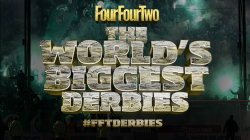More Than A Game: Cerro Porteno vs Olimpia
South American derbies are soaked in flares, fights and match-fixing. For the December 2006 issue, FourFourTwo sent Daniel Neilson to Paraguay's fiercest derby - Cerro Porteno vs Olimpia
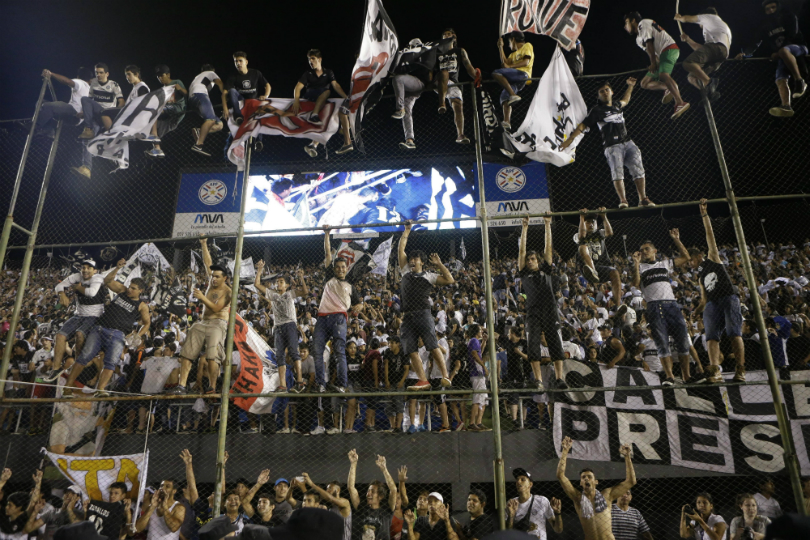
We hear the Cerro Porteño barra brava before we can see them. Echoing down the narrow streets of Paraguay’s capital Asuncion is the racket of thumping drums, firecrackers exploding, trumpet blasts, whistles and chants. Concerned kiosk owners around the ground hurriedly pull down the shutters in anticipation of the onslaught.
The police hear them, too. Out of nowhere an old US-style school bus halts outside the stadium to let 40 or 50 armed officers out. Heavily protected riot police stand guard while a couple of army troops with machine guns loiter in the shadows. A huge armoured truck, loaded with three water cannon, trundles round the corner.
Then, in the distance, a swathe of red and blue bounces towards the Defensores del Chaco stadium for the biggest game of the year. Hundreds of fans arrive outside the entrance to the north stand, jumping to the beat of homemade drums and screaming out songs. Those already inside peer over the top of the terrace to watch the spectacle; some throw poorly-aimed missiles in the general direction of the police. There is no doubting the barra brava have arrived, and no mystery why they are nicknamed El Ciclon: the cyclone.
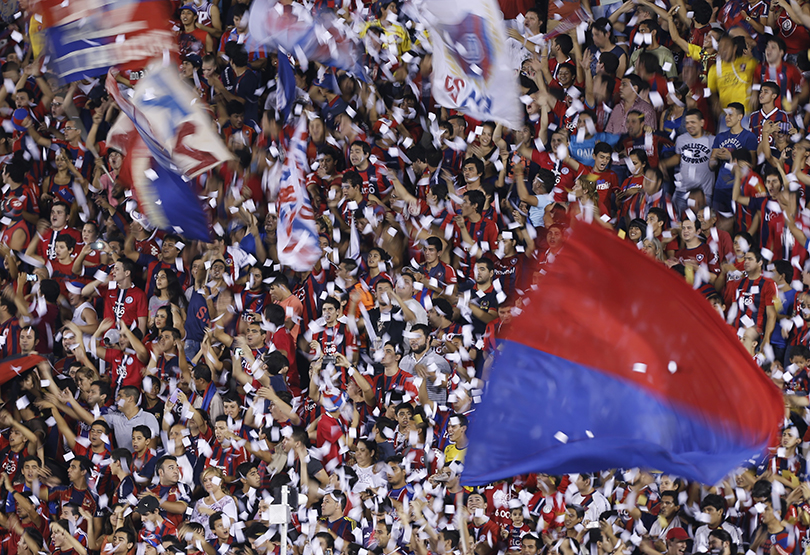
Police confiscate belts, bottles and anything mildly solid-looking. The last time Cerro Porteño played Olimpia it descended into a riot
The party subsides slightly as edgy police thoroughly frisk the supporters waiting patiently to enter the ground. They confiscate belts, bottles and anything mildly solid-looking. The last time Cerro Porteño played Olimpia it descended into a riot; this time the police are taking no chances.
Then the beep of a horn disrupts the lull, fans break away from the queue and pandemonium ensues again: the Cerro team bus has arrived. As players hang out of the windows waving red and blue striped flags, a couple of cocky fans clamber up the side of the coach, grabbing at their heroes. The music sparks up again and when the frenzied crowd chant “We are Cerro, we are Cerro,” the players join in.
At the south end of the ground a similar performance is being staged, only in Olimpia’s black and white colours. It is two hours before the 248th meeting of Paraguay’s two most popular teams, Cerro Porteño and Olimpia Asuncion, kicks off. Each side has won 86 times. There is a lot to play for and the atmosphere is thrilling.
Derby or party?
Get FourFourTwo Newsletter
The best features, fun and footballing quizzes, straight to your inbox every week.
This is the biggest party in Paraguayan football, between two teams supported by at least 90% of the public
“This is the biggest party in Paraguayan football,” Olimpia’s recently appointed president Dr Manuel Nogues tells FourFourTwo a couple of days before the game. “I would estimate these two teams are supported by at least 90% of the Paraguayan public and there is a long, passionate and strong rivalry between these two teams.”
Emerging from opposite ends of Asuncion’s geography and economy, bourgeois Olimpia and ‘club of the people’ Cerro have been fierce foes for 94 years. It is a rivalry that is deeply embedded in both the history of their clubs and the country they share.
“Olimpia, very generally, are identified with the higher classes,” continues Dr Nogues in his downtown office. “But I think most of the rivalry is down to envy from the other teams, especially Cerro, because we are the only ones to have had international success.”
It’s a statement designed specifically to infuriate their opponents, because Olimpia certainly boast the biggest trophy room. In pride of place are three continental Copa Libertadores, the Copa InterAmericana and the Intercontinental Cup. They have also won the domestic league 38 times to Cerro’s 27. And much to the chagrin of Cerristas, and the unabated joy of Olimpistas, Cerro have never won an international competition.
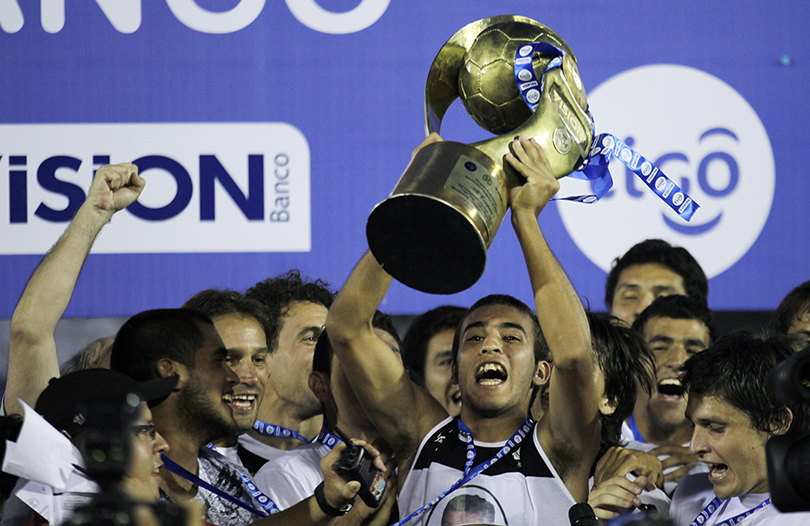
However, with Olimpia in poor form of late, it is last year’s league winners who go into the derby as favourites. Like most Latin American countries, the Paraguayan football year is split up into the opening (apertura) and closing (clausura) tournaments; the winner of the first plays the winner of the second to determine the championship winner. In 2005 Cerro won both, but finished second to Libertad in the 2006 apertura. With only one point in it at the top of the table and a Copa Libertadores place to play for, both sides are desperate for a good result – and there’s nothing sweeter than beating your biggest rivals.
Big news
With all great rivalries, the game is fought as much in the stands as on the pitch as both tribes aim to score points in an imaginary league based on fanaticism. Paraguay’s biggest game is their opportunity to outwit, outshine, and out-sing each other. As a result, the Asuncion superclasico is an extravagant show of posturing and bravado.
For the week before the game newspapers sold on Asuncion’s street corners are dominated by the event. “It will be a titanic fight,” promises one tabloid. “It’s an abuse!” screams another in reference to the large hike in entrance price. A less salubrious organ features a model in slinky swimwear – because, she declares, “Every time I wear my lucky little Cerro bikini, they win”.
Only the death of Paraguay’s former dictator Alfredo Stroessner, whose 35-year rule was more iron fist than velvet glove, keeps football on the back page – for a day. It is, in short, big news here... if not anywhere else.

Few people have anything to say about this landlocked country, and when they do it is overwhelmingly negative. The American journalist and satirist PJ O’Rourke said Paraguay “is nowhere and famous for nothing”.
A locus of money-laundering, smuggling, arms and illegal narcotics trafficking, and fundraising for extremist organizations
The CIA is even less complimentary, describing the triple border it shares with Argentina and Brazil, near the stunning Iguazu waterfalls, as “a locus of money-laundering, smuggling, arms and illegal narcotics trafficking, and fundraising for extremist organizations”. It is even said the US considered bombing the area after 9/11 because of the proliferation of Al Qaeda terrorists thought to be living there. Nearly everyone advises against going to Hannibal Lecter’s adopted neighbourhood.
Even in the nicer parts of Paraguay, the economy has what might be termed an informal sector. The streets of Asuncion are filled with hawkers selling dodgy DVDs, contraband electronics, ‘Tag’ and ‘Rolex’ watches, antiques and fake Cerro and Olimpia tops, while elderly native Guarani women sit quietly on the pavement with their traditional handicrafts.
Some great players have come out of Paraguay. There are only six million people living here, yet we're the third-best football nation in South America
But contrary to popular belief, Asuncion is a neat, pretty colonial city, and relatively safe by Latin American standards. Its residents are unerringly polite and friendly, and many will happily invite a stranger to dinner if conversation about the superclasico is on the menu.
Over pizza and beer, Cerro fan Carlos Sarubbi offers some explanations as to why Paraguay’s football reputation is disproportionate to its country’s humble stature. “Some great players have come out of Paraguay. There are only six million people living here, yet we are the third-best football nation in South America.”
NEXT: "The champion of the millennium"
Clubs and communities
A lawyer by trade, Sarubbi argues that in a country where 60% of people live below the breadline football is often seen as a way out of poverty. Poor families, often living in the countryside, will plough their modest income into pushing a talented youngster.
Even so, the average wage for a first division player is still only £105 a month; the better ones soon move to richer clubs in Argentina and Europe. Tellingly, none of the Paraguayans who played in the World Cup represent Olimpia or Cerro, but the superclasico has been graced by men like Roque Santa Cruz (Bayern Munich), Julio dos Santos (Bayern Munich) and Carlos Paredes (Reggina).
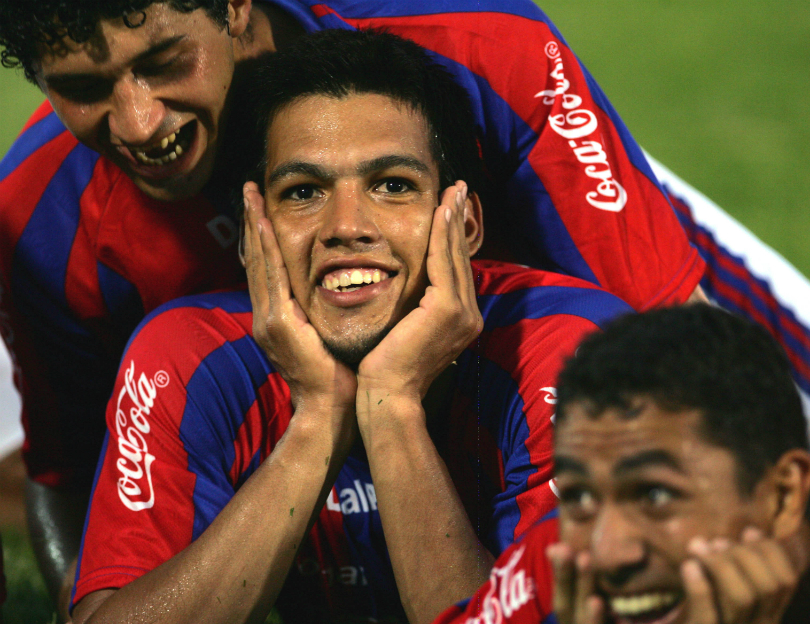
“Many famous players here were poor,” explains Sarubbi. “Like many clubs, Cerro have a strategy of bringing young players from the countryside to train them. Their families are often invited too and provided for. Clubs here are like a family and they give something back to the community.”
While football in Paraguay can offer a slim opportunity to escape poverty, it has provided a unifying remedy to Paraguay’s troubled history, bloody by even Latin American standards. And it’s testament to the resilience of Paraguayan football that in the 100 years since the football league was founded, the game has survived a three-decade despotic regime, a civil war and the devastating Chaco War with Bolivia – with the league suffering only two minor interruptions.
Typically, it was against a backdrop of warring political tribes that a Dutchman called William Paats first kicked a ball on Paraguay’s red soil, at the turn of the last century. One contemporary newspaper reported how people “moved towards him as if he was a movie star” when he kicked the ball around Asuncion. He had brought the football from Buenos Aires with the express intention of introducing it to the countrymen. They took it to their hearts with enthusiasm.
Footballs were expensive; only the wealthy from the ‘capitalist neighbourhoods’ could play. Since then Olimpia have been associated with the rich
In 1902, Paats and his new friends formed Paraguay’s first football team – Olimpia Asuncion. Several names were discussed, including Paraguay and Esparta, but Paats decided on Olimpia and the black and white colours. Footballs were so expensive that only wealthy enthusiasts from the ‘capitalist neighbourhoods’ could practise the game, and ever since then Olimpia have been associated with the rich upper classes. This is a constant source of derision, as is the fact they have dominated Paraguayan football ever since.
"The champion of the millennium"
It’s a hot Friday afternoon two days before the game and Jose Villalba, former president of the Olimpia supporters’ club and father to five young Olimpistas, is showing me cuttings from the team’s successes over the last 40 years. His wife’s eyes roll as he proudly pulls out a front page of a now-defunct football paper. It pictures the 1979 team, all perms, ’taches and tight shorts, celebrating their first Copa Libertadores win.
Another carefully protected sleeve from the same year shows the winning shot against Sweden’s Malmo FF in the Intercontinental Cup final. An aggregate 8-3 victory against Deportivo FAS of El Salvador for the Copa Interamericana completed the treble in the same year. “I was going to the stadium three times a week during those golden years,” reminisces Villalba. “We were involved in so many cups.” Between 1978 and 1983 Olimpia also won the Paraguayan league a record six times in a row.

Like many fans, Villalba puts the success down to their charismatic president Osvaldo Dominguez. After being elected in 1975 he ploughed millions into the team and bought in top-quality players – including arguably Paraguay’s greatest player Raul Vicente Amarilla, lured back from the Spanish league in 1980.
Amarilla was still playing for Olimpia in 1990, and Dominguez was still at the reins, when they won their second Copa Libertadores title. The same year they also won the Supercopa Sudamericana (an invitation-only trophy for past Libertadores winners) and, despite losing the Intercontinental Cup to AC Milan in Japan, automatically won the Recopa Sudamericana (the equivalent of UEFA’s Super Cup).
This established them as one of the most successful teams in South America, and also encouraged overexcited Paraguayan journalists to dub them the ‘Team of the 20th Century’, the ‘Champion of the Millennium’ and, most commonly, the Rey de Copas: ‘King of Cups’. They may not entirely have lived up to that name since, but they marked their centenary year in 2002 by winning their third Copa Libertadores.
Everything we win, we win alone. Everyone hates Olimpia. I don’t care, Olimpia is passion
That remains their only silverware this century – by contrast, Cerro have won the national title three times since 2001, although they’ve also claimed the dubious honour of entering the Libertadores the most times without winning it – but the stadium is full again: according to Villalba, Olimpistas can be contrary. “When we are doing well there aren’t so many people but when, like now, we haven’t won anything for a while it is full. Very strange.
“But everything we win, we win alone. Everyone hates Olimpia,” notes Villalba, not looking particularly upset. “If the team are playing an international game, supporters of all the other teams want us to lose. But I don’t care, Olimpia is passion” – to prove the point, he’s now thumping his chest – “it’s something that lives in my heart and soul.” His wife’s eyes once again roll towards the ceiling.
"Olimpia are living through their history"
Later that evening, FourFourTwo heads past houses with immaculate lawns, Porsches and SUVs parked in the drive and guards on the door to meet Enrique Bacchetta Chirani, Paraguay’s number one lawyer and Cerro’s vice-president.
Inside his office we sit drinking coffee and admiring a large modern painting depicting cartoon-like football players on his wall. Cerro players are represented, as are Guarani and Libertad; Olimpia players are conspicuous by their absence. Although the young Chirani is currently busy on a case that is obsessing the country – the kidnap and brutal murder of Cecilia Cubas, daughter of former president Raul Cubas – he finds time to answer questions about his beloved team.
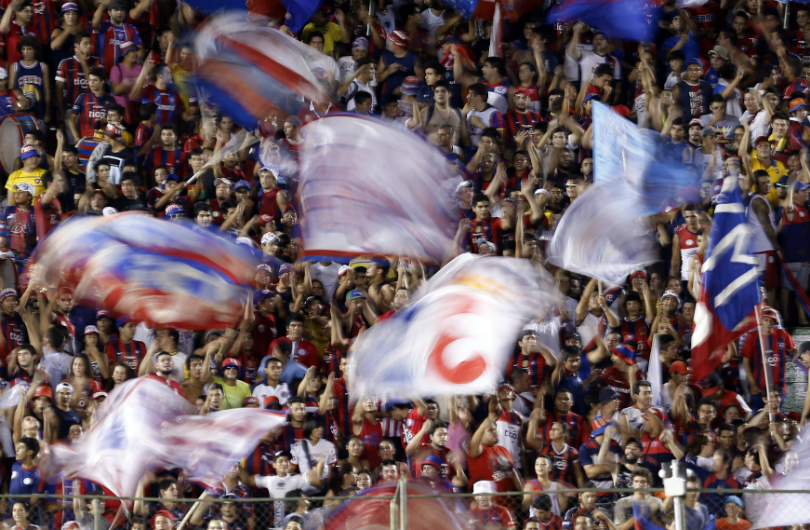
Quizzed about Cerro’s lack of overseas achievements, Chirani is relaxed and animated. “It’s inexplicable that we haven’t won,” he muses. “Cerro have a very strong fan base and they have it deep in their heart and soul. But Cerro have not won any international tournaments and this is an obsession.” And it’s no laughing matter that their great rivals have won the Libertadores. When told that the new Olimpia president believes Cerristas are envious, Chirani’s demeanour changes instantly: levity is replaced by gravity.
We have a mysticism that Olimpia don’t have. Our players were born and brought up in the house
“It’s not envy, it’s dissatisfaction that we haven’t won anything. Besides, Olimpia are living through their history, they can’t talk about envy. We have a team of Cerristas who love their club. They are not playing just for money,” he adds, the retaliatory spirit rising within him. “We have a mysticism that Olimpia don’t have. Our players were born and brought up in the house. Cerro is the most powerful at the moment, especially in terms of fans.”
It’s taken as read that Cerro have more fans than Olimpia. And like Boca Juniors in neighbouring Argentina, Cerro are most closely associated with the poor majority. “Cerro is the club of the people and it identifies us,” explains lifelong fanatic Guillermo Balbuena, proudly showing a photograph of himself as a baby dressed in red and blue. “When it’s hot my friends ask me why I don’t take off my Cerro shirt. I reply that when I take it off my skin is not the same colour. I am convinced that a Cerrista is born, not made.”
NEXT: Chipas, drugs and banners
Cerro has humble origins. In 1912, during yet another violent political upheaval, a woman in the poor Barrio Obrero (workers’ neighbourhood) decided to start a football club to entertain the street children she often looked after. After improvising a pitch, Dona Susana Nunez invited youngsters from the area to play this new game. Before long she was in a position to create a football team – and she dreamt of it being for the masses.
Barrio Obrero today is still a relatively poor area, and its fanatical allegiance is worn on its scruffy sleeve. Restaurants façades are painted red and blue, kiosks are named Dona Nunez and the team flag is a semi-permanent fixture in many houses. At its very heart is Cerro Porteño’s grand stadium la Olla, the Bowl, named after its position in a small valley.
Within the stadium complex staff sip on yerba mate, a traditional shared tea drank through a straw out of a gourd. It’s an important social ritual: a time to converse and make friends. FourFourTwo sits and sips with Dr Clodomiro Villamayor, the general secretary and club legend.
Between slurps from a gourd crudely painted with Cerro’s logo, he explains how the club is named after a famous battle that paved the way towards independence from Spain and how even its colours are steeped in political significance.
“In a time of instability it was decided to make a statement of peace, with the intention of unifying the spirit of the people,” intones the statesmanlike Villamayor. “So they chose the blue of the Liberal Party and the red of the Colorado Party. They then added white shorts to complete the colours of the country’s flag.”
Cheers, colours and chipas
The afternoon of the game is hot and sunny, despite being in the middle of winter. Outside the Defensores del Chaco stadium makeshift barbeques fill the air with the enticing smell of slowly cooking hunks of meat, crispy pate-filled intestines and chorizos. Hunched over coal-fired stoves, elderly ladies make popcorn and deep-fried tortillas; all are drinking mate or its ice-cold equivalent terere. The barra brava subtly finish off their boxes of wine before running the police gauntlet. (Alcohol is banned at the games, but those with a keen ear can hear whispers of "leche", "milk", signalling booze for sale.)
Out on the terrace, the scene is intoxicating. Above the goal at the northern end, the unruly el Ciclon wave banners, flags and, in some instances, shirts
Out on the terrace, the scene is intoxicating. Above the goal at the northern end, the unruly el Ciclon wave banners, flags and, in some instances, shirts. As one, the whole stand surges forward, then back, to the left and to the right. It is a choreographed manoeuvre designed to look spectacular from a distance, and it works. Meanwhile they goad Olimpia and the police who surround them:
We are the fans of Cerro
You only have to be hard
To kill a policeman
To burn a guard
Che, Olimpia, you’re shitting yourself.
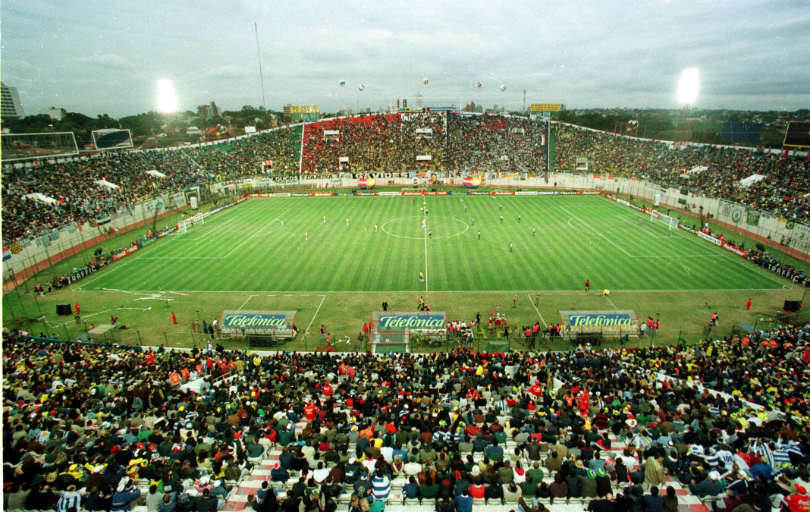
The south end is an equally riotous collage of black and white. Above huge signs announcing their self-proclaimed nickname mafia negra, the Olimpistas reply:
Look at our people,
Look at our barra brava
Everyone here knows
We are the King of Cups
Tri-champions
Tri-champions
Tri-champions
The Cerristas around the stadium clap sarcastically. The war of the fans has begun.
There are a lot of drugs at the game. Well, if you’re going to be jumping up and down for four hours you need something
FourFourTwo sits with Cerro fan Eduardo Gonzalez in the mixed preferencia. At £5, it is more than twice as expensive as the terrace, but Gonzalez refuses to enter the galeria. “It is very, very dangerous. There are a lot of drugs at the game,” he tells me. “Well, if you’re going to be jumping up and down for four hours you need something. But also be careful in the preferencia, there can be problems here too,” he warns. His prediction is correct.
Despite a clear divide in team colours the odd stray wanders into enemy territory, causing scuffles to break out throughout the game.

With only five minutes to kick-off, 40,000 fans are singing and the atmosphere intensifies. Then, as Cerro Porteño appear from a large and fairly random inflatable bus, bedlam breaks out. Ticker-tape fills the air and, in a move organised with military precision, an enormous striped red and blue flag covers the entire north stand in a matter of seconds. Although it has been seen before, its effect never diminishes.
But el Ciclon have a surprise: as the striped flag disappears as quickly as it appears, an equally huge chequered banner speeds up from the bottom to cover the entire barra brava. Then it, too, disappears. There’s a match to watch.
"This will only make us stronger"
Olimpia players run out towards their fans and the south stand is enveloped in another giant flag portraying three cups. But they know they have been outdone by Cerro’s surprise display. Cue more ironic applause from Cerristas. One-nil to el Ciclon.
Settling down to watch the game, we buy chipas, a traditional cheesy bread snack made from tapioca flour. “Going to the game and not eating chipas is like not going to the game at all,” notes Gonzalez. And the chipas is the highlight of the first half-hour: it’s a typically scrappy, ill-tempered derby until Cerro are silenced when Olimpia’s long-haired young forward Justo Meza nips round the keeper to neatly slot the ball home after 26 minutes.
In the preferencia, the black-and-white half stand and turn to the silent Cerristas, cheering, swearing and sticking their fingers up. The vast flag appears again. “Tri-campeones, tri-campeones,” chant the Olimpistas.
“This will only make us stronger,” predicts a Cerro fan. His team have a history of making stunning comebacks inspired by their fans. They were dubbed el Ciclon in 1918 when the team, 2-0 down with five minutes to go in a play-off to win the league, were spurred to victory by an ear-splitting backing from Barrio Obrero’s finest lungs.
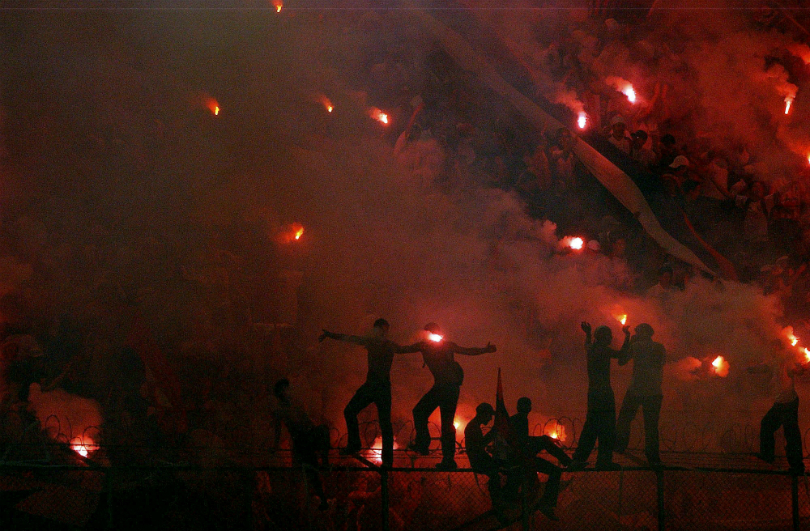
True to their history, Cerro come out fighting in the second half. It’s no surprise when, with 20 minutes left, midfielder Jose Domingo Salcedo somehow manages to thread the ball round several defenders and under the goalkeeper. It’s also no surprise that both banners again cover the north stand.
With honours even and stakes high, the goal takes the sting out of the game: both sides seem happy to settle for a draw. Even when Olimpia’s man of the match Josias Cardoso is sent off, Cerro happily pass the ball around in their own half until the referee blows the final whistle, bang on 90 minutes.
The party is in full swing under the floodlights. Singing and dancing echoes around the emptying ground for the next 45 minutes until every last Cerrista has left
Supporters of both teams seem content with the outcome, but the mafia negra have to get their own back for the two flags Cerro surprised them with. As the Cerristas head home, the south stand remains voluntarily packed. The party is in full swing under the floodlights. Singing and dancing echoes around the emptying ground for the next 45 minutes until every last Cerrista has left. It’s another little victory for the fans. Final scores: Cerro Porteño 1-1 Olimpia Asuncion; El Ciclon 1-1 Mafia Negra.
Apart from the odd petty fracas and the fact the riot police had to form a barrier around corner-kick takers to protect them from a barrage of coins and bottles, the game seems to pass off relatively peacefully. But later in the evening, TV reports show fighting between the barra bravas around the city, while is also talk of a drive-by shooting; the next day, newspaper ABC Color confirms that two men and a teenager were hospitalised after being shot at from a guy on the back of a motorbike after leaving the game.
However, the drive-by story is hidden away on page eight. The front pages discuss the colourful show put on by the fans, despite the poor football. ‘Little Football, Lots of Fans’ booms the headline, choosing to report the good over the bad. Once again, football has triumphed over the violence and disarray that plagues Paraguay.
This feature originally appeared in the December 2006 issue of FourFourTwo magazine. Subscribe!
